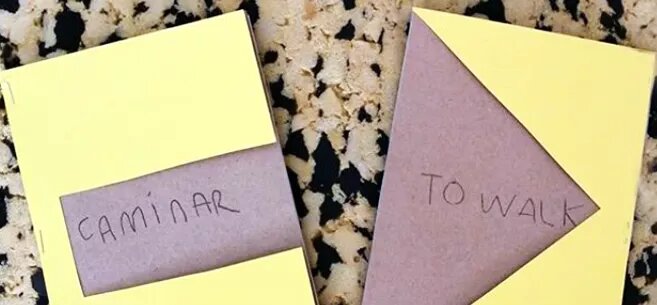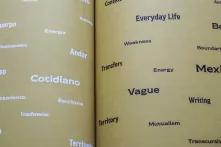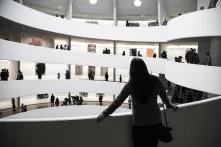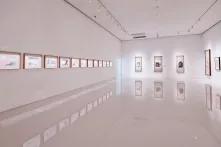
I was recently reading “Re-thinking the Apocalypse: An Indigenous Anti-Futurist Manifesto.”(1)This writing begins by questioning how our political imagination is mostly concerned with imagining the end of the world and not the end of colonialism: “We live the future of a past that is not our own” they wrote. Nowadays because of multiculturalism and globalization, it is almost impossible to “go back” to a past that we can experience as our own. Ultimately national history is written as a propaganda for the gain of a few, or at least this is how I have experienced the narrative of history as part of my identity. The content of the quote is powerful for me because it reminds me of the relevance of paying attention to the present, in order to imagine what strategies and tools we can use to gain agency for a more sustainable and balanced lifestyle.
Walking is a practice that can help us understand the present time. In a way, it can be a decolonizing tool or even a strategy for cities where urban planning has not considered pedestrian lifestyles because the main goal of “progress” is based on the production of machines as extensions of our bodies. In my practice I have been using the act of walking as a methodological tool to advise art practitioners coming to Mexico City to develop art research. Walking helps them relocate their questions and practice in relation to a city that, like most cities, has its own concerns and logic. By walking they can learn how to create a dialogue within their current context instead of imposing preconceptions about Mexico and its outskirts.
Walking has also helped me to curate art while questioning white cube logics. In a way, walking is also a tool to decolonize my own academic training by challenging the formalities of a white washed art experience, that most of the times exoticizes the day to day of Latin American life.
Walking as a practice for almost anyone, can bring back the somatic as a source of knowledge.

1. Walking challenges a prevailing discourse
A day after the commemoration of Columbus Day - known in Mexico and other parts of Latin America as Día de la Raza (Day of the Race) - the first mainstream media covered exodus of Central Americans began their journey by foot towards the United States. During October 2018 in Mexico City, the experience of walking finds space in a collective corporeal statement, which must confront tear gas in order to question the dominant narrative about exploitation, hunger, and otherness in the twenty-first century.
Walking nowadays has become a form of political reaction. It is a type of speech that articulates itself through the collective body of an exodus, but also through the bodily experience that movement offers.(1) The artist Richard Long understands a bit about the potential of walking and the path that it makes. Yet little did he imagine that a walk could become an exodus, which can also end up being a critical exercise in global times.
Walking involves visual perception, in that it is a way of seeing through the motion of the body parts. The visual returns to the spatial, as it becomes an instrument to understand livability, the enervation of things, and the way that we get exhausted by them. Walking is a constant reminder that seeing is only one of the body’s senses. We learn to look through movement and through our other senses that we use while we walk.
Using one’s own body as an instrument to map a place, and to inhabit other forms of understanding that are more aware of our daily affectations, can give us another way to experience space and everything that happens in it. To place my body in front of yours, in opposition or in balance, in continuous dance or complete exposure, is to learn to speak from spatial positioning, embedded with social and political connotations.
The changeable characteristic offered by the movement of a walk, has helped me learn to listen to myself as an art researcher, and to recognize a part of myself in motion within a certain context. It has helped me learn to inhabit my own contradictions and to try to produce knowledge from daily life.
Transurbance, as a method of walking as urban drift, involves wandering around all kinds of urban spaces. Applied to artistic practice, transurbance is a useful tool to talk about all that surrounds the boundaries for what is called contemporary. It is a tool that provides space to rethink the epistemological boundaries between disciplines, temporalities, and artistic methods.
Taking a transurban walk is also a lesson in rewriting. It is a multivalent practice. Like a transurban walk, Mexico City’s independent art scene ends up looking like a mutualistic organism. A transurban walk becomes a graft that allows for the transference of energies, codes, and types of knowledge. Independent art scenes interact with each other in a hybridized, mutualistic relationship, which enables us to inhabit our own contradictions as art practitioners.
2. Inhabiting Contradictions
Through this logic of hybridization/graft, some of us have found a sort of semi-functional utopia. There are some art collectives that subsist under the logic of transurbance, and that use mutualism as both a model of survival and a method of investigation.
How can art practices operate without the walls that constrain a work of art? How can other disciplines inform the artistic practice? How does the artistic practice inform curatorial research and vice versa?(2) Nowadays, to a great extent walking informs my curatorial approach. I have been trying to unlearn certain ideas about space in order to make space a corporeal issue. Walking has become a practice that helps me better understand not only certain physical, but also epistemological spaces.
Relocating my position in space helps me understand the presence or process of a work of art in front of me. It helps me go against the curatorial instinct to explain things, and instead think together with artists while they produce art and perform their artistic research.(3)
Curatorial practice, like walking, is a form of writing; it is a process of making connections and changes. Similarly, by walking the same street, over and over again, one learns to rewrite that route. Rewriting as a physical and mental process brings about semantic changes; movement and relocation change the course and meanings of certain things. How can one word mean so many different things at the same time?
To learn to inhabit this contradiction, it has helped me to think of the everyday as a working principle, as a guideline for artistic methods. Context speaks to us - and if we want to - we should learn how to converse with it.(4) Physical motion and the perspective of motion have helped me understand curatorial practice as a form of research that - even if does not end up being art in itself - allows me to problematize and contextualize certain artistic practices, and also create the space to make art happen.
Curatorial practice enables me to understand certain contexts, but above all, enables me to produce aesthetic consequences concerned with the questions asked through walking. To walk as a curatorial practice is to constantly challenge all prevailing discourses.(5)
3. Deriving knowledge from the quotidian
For the research of everyday life, one need not have a specific goal; rather, it is enough to be attentive to everyday occurrences. For the site specific art production and research processes, such as those that I accompany through The Lab Program: Art Research & Mobility Network, in Mexico City, the quotidian is the primary subject of research.
Walking the urban territory with the invited artists in residency is a suggestion to learn to feel vulnerable in that space. There is no time for contemplation, as most of the time is reduced to the action of steps on the concrete.
In Mexico City, the practice of walking is much more complex than in other places. The sensorial overstimulation that one experiences when walking through this city is at once interesting and terrifying. For many of the artists that I work with, walking in Mexico City involves learning a new ability of sensorial multi-tasking. In this manner, the senses learn to work together in order to think as an alert whole. It is a challenge trying to understand the physical territory, the context, and the quotidian of this city overfilled with sensory stimulation and with socially complex risks. The process helps guest residents recognize in themselves their physical limitations, personal vulnerabilities, and the manner in which they are rearranging their own sets of art methodologies, experiences, and knowledge.
Without being either spectators or ethnographers, the guest artists and I work together to gradually recognize the urban territory from a personal and affective approach. The path of any type of walk helps us to recognize a physical space, and to reexamine ourselves through that same space. Topography indelibly influences the way that we experience our lives through space on an everyday basis; and by investigating its particularities we can draw insights into the arrangements of our subjectivities.
The personal concerns of each of the invited artists, and the spatial and epistemological paths that we walk together, play out as research processes and sometimes as a finished work of art. While the boundaries between artistic practice and research are not clearly defined, it is in this confusion that I find most of my interests as curator, researcher and artist.
Although each investigation and each artist bring different interests, some walks and routines are repeated. But in this process of rewriting, I have learned to change the logic of different art research methods. Instead of generating different research processes that are concerned with creating discourses, I am interested in using walking as a process that allows invited artists to think about their own production as a transcursive possibility. Inevitably, a walk becomes part of every life, in which the individual’s own artistic concerns can find an open space to discuss what has taken place.
Trying to pay attention while walking through everyday life might seem like an easy exercise to perform. The quotidian sounds mundane, but in practice when one tries to be receptive and attentive to everyday occurrences, it is difficult not to feel lost. To pay close attention to the quotidian is to empty oneself, and emptiness causes dread in most of us. An interesting thing happens during the Lab Program when contradictions are assembled and vulnerabilities are recognized. A conversation opens up between the personal concerns of a visiting artist and Mexico City; the paths of each converge to develop processes of art research and artwork. These boundaries are almost always unclear, and this confusion is what interests me most.
Translated from the Spanish by Matthew Zussman, March 2019
This text is part of an investigation that I realized within a laboratory of art & research production which is based in Mexico City. ‘The Lab Program-Art Research & Mobility Network’ (2017) is a program dedicated to art-investigation and artistic mobility, collaborating with independent art spaces in Mexico City. The aim is to exchange knowledge, develop methodologies and to promote site based investigation praxis with Mexico City as its basis and starting point.
Footnotes:
1 Walking [la marche] also designates a shifting limit, which is nothing other, in fact, then what’s called a frontier. The latter always goes hand in hand with fringes, intermediary spaces, with undeterminable contours that can only really be made out when traveling through them. It’s walking, too, which makes the internal frontiers of the city evident; which, by identifying it, reveals the zone. Whence the beautiful title Walkscape, which stresses the revelatory power of this dynamism mobilizing the entire body - social as well as individual -, in order to then transform the mind of he who knows how to look. Such an enterprise has a genuine “political” stake - in the primal sense of the word-, a way of keeping art, urbanism and the social project at an equal, and sufficient, distance from each other in order to effectively illuminate these empty spaces we have such need of to live well. (see Careri, Francesco/ Pla, Maurici, (2014): Walkscapes. Barcelona: Gustavo Gili. 16. English translation by Steve Piccolo and Paul Hammond)
2 From “Shamanic healing to curatorial practices (…) I think that as ordinary people, if we would like to heal the landscape and for the landscape to heal us; and if the place where we are living could heal our own gravitational weight: with whom could we speak? Where should we go? (...) Based on our sentiments, or based on the way that we work towards art, we do not acknowledge curatorial practices from the work of art itself, nor from a selective, unique representational or discursive approach.“ (Montenegro, Adrián/ Obando, Jennys (2019): Ver para Creer: Ilusión Sospecha y desencanto. Un proyecto Curatorial de la Compañia para los 16 Salones Regionales de Artistas . Bogotá: Zona Sur. 12)
3 “Form” as “formation” and as “formulation,” as “dynamic agency,” as results from an open-ended process, much more impure and relational, would call for experiences and research made from less traditional or predictable disciplinary frameworks. (Gausa, Manuel (2010): Open. Espacio, Tiempo, Información. Barcelona: Actar. 35)
4 “The map is not a territory.” For me, the work of art is not the gallery, nor the museum, but instead the contexts of this walk, of where it happens.
5 “Between the everyday and the extraordinary. Screens and surroundings, specific sites and landscapes, scenes and occurrences overlap today in simultaneous and superimposed experiences: they constantly change location - and scale - between physical and virtual information.“ (Gausa, Manuel (2010): Open. Espacio, Tiempo, Información. Barcelona: Actar. 79)
6 “The Fil rouge of diverse objectives of research is an inscription of the quotidian; this means that attention is given to the the dimension of the lived present, to diverse forms of concrete sociability that acquire shape in everyday life and to the meaning of the imaginary that all that this presupposes. In this frame of common sense is a privileged medium of analysis of the quotidian. (...) The scientificity of a study is dictated by neither the rationalism nor the epistemological “rupture,” but by the real inscription of the experience. This inscription on experience and the flow of what is lived is a constant that goes throughout the methodological reflections in many types of research; for this proposition we can speak of the methodological situationism of Maffesoli (Le Queau (1997)), according to which every action, every object, possesses an immanent intelligibility that should be cultivated from time to time on the part of the researcher.“ (Grassi, Valentina (2007): La investigación en el Centro de Estudios sobre lo Actual y lo Cotidiano. URL:
http://www.scielo.org.mx/scielo.php?script=sci_arttext&pid=S1405-143520… (22. 6. 2020)
7 In kinematics, trajectory is a geometric place of successive positions through which a body in motion passes. The trajectory depends on the system of reference in which movement describes. Trajectory depens on the reference system in which the movement is inscribed; in other words, from the perspective of the observer.
Bibliographic references:
Careri, Francesco/ Pla, Maurici, (2014): Walkscapes. Barcelona: Gustavo Gili.
Gausa, Manuel (2010): Open. Espacio, Tiempo, Información. Barcelona: Actar.
Grassi, Valentina (2007): La investigación en el Centro de Estudios sobre lo Actual y lo Cotidiano. URL: http://www.scielo.org.mx/scielo.php?script=sci_arttext&pid=S1405-143520… (22. 6. 2020)
Montenegro, Adrián/ Obando, Jennys (2019): Ver para Creer: Ilusión Sospecha y desencanto. Un proyecto Curatorial de la Compañia para los 16 Salones Regionales de Artistas . Bogotá: Zona Sur.
Stalker. Laboratorio d’arte urbana. Roma
URL: https://digilander.libero.it/stalkerlab/tarkowsky/manifesto/manifesting… (22. 6. 2020)


